Salina dei Monaci
Updated at: 25-01-2025
How this content can help you:
- You will discover the biodiversity and ecosystem of the Salina dei Monaci.
- You will learn about the history of the Benedictine Monks and the importance of salt.
- You will get to know migratory birds such as flamingos.
- You will explore Mediterranean flora: juniper, myrtle, and mastic.
- You will understand current conservation efforts.
- You will discover the beaches and recreational activities available.
- You will learn about the importance of wetlands.
- You will delve into local traditions and culture.
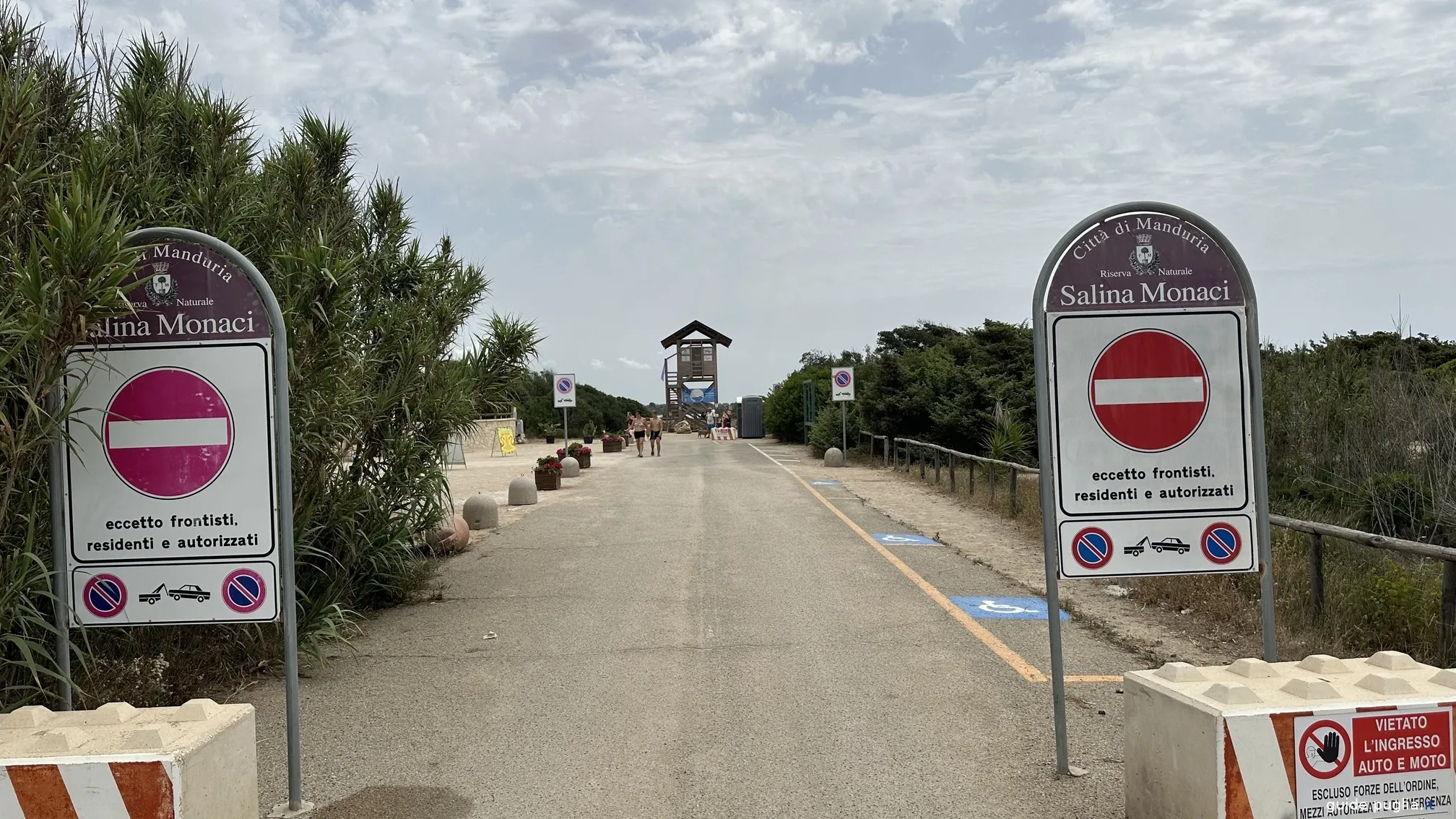
10 Rules for Using the Protected Area of Salina dei Monaci
- Reach the beach only through the indicated and allowed paths.
- Cliff dunes are not a beach: do not plant your umbrella outside the emerged beach, do not damage, walk on the dunes, or on the dune vegetation.
- Do not dig holes and do not move or bring stones and foreign materials onto the beach.
- Limit to the strict necessary the objects and equipment you bring to the beach and take back home everything you brought with you, especially waste.
- Limit to the minimum necessary the spaces, times, and activities with which you occupy the beach.
- Do not light fires.
- Do not use any type of tent, not even for a few hours or during the day.
- Do not bring or use tables, gazebos, or other setups.
- Do not produce excessive noise and sound pollution.
- Do not access or stay on the beach at night.
Welcome to Salina dei Monaci, a hidden gem in the heart of Puglia. This protected area, part of the R.O. Natural Reserves of the Eastern Tarantino Coastline since 2002, is a magnificent example of how nature and history can coexist harmoniously. Here, lush vegetation blends with the centuries-old history of the Benedictine Monks, offering a spectacle of biodiversity and natural beauty.
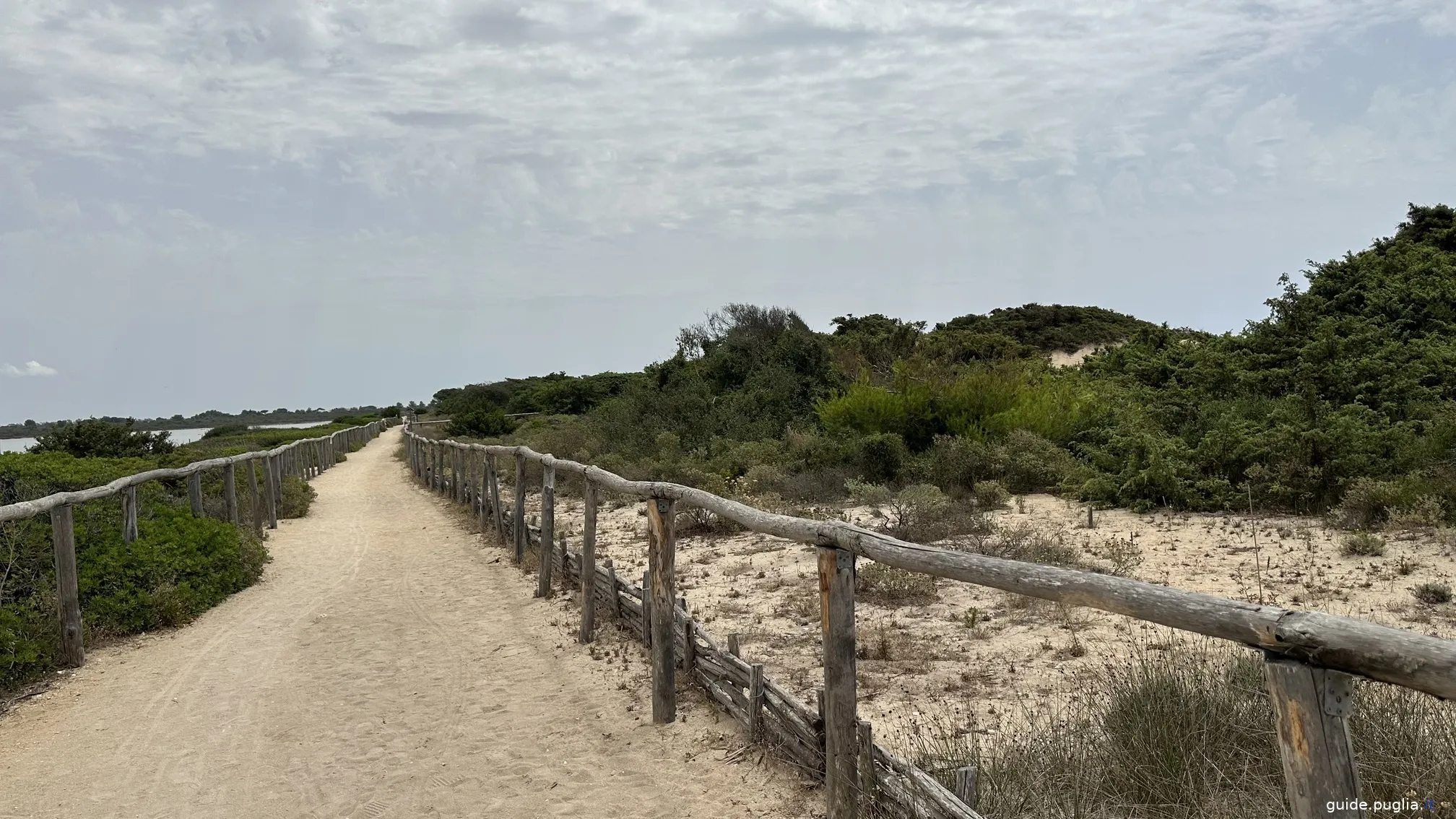
Salina dei Monaci: A Complex Ecosystem
A World of Biodiversity
Salina dei Monaci is a place where nature expresses itself in all its variety. The reserve extends along a narrow strip of land separating the lagoon from the open sea, creating an ideal habitat for numerous species of migratory birds and terrestrial fauna. The lush vegetation comprises a variety of plants typical of the Mediterranean scrub, such as juniper, myrtle, and mastic. These plants not only contribute to the beauty of the landscape but also provide shelter and nourishment for many animal species.
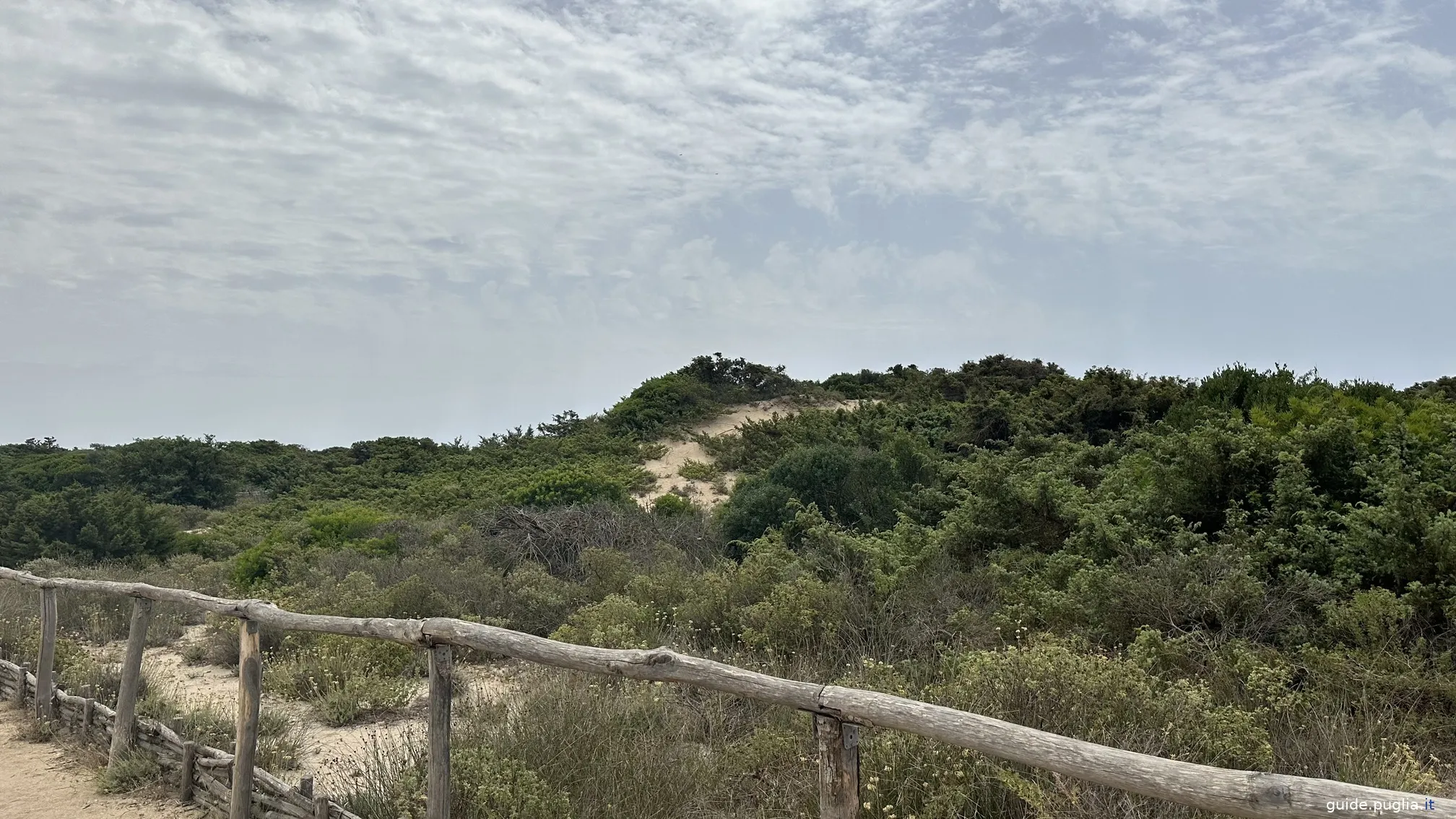
Migratory Birds
One of the main attractions of Salina dei Monaci is the opportunity to observe a wide variety of migratory birds. Among the most fascinating species are the pink flamingos, which add a touch of magic to the landscape with their elegance and vibrant color. In addition to flamingos, the reserve also hosts herons, egrets, and black-winged stilts, making it a privileged place for birdwatching enthusiasts.
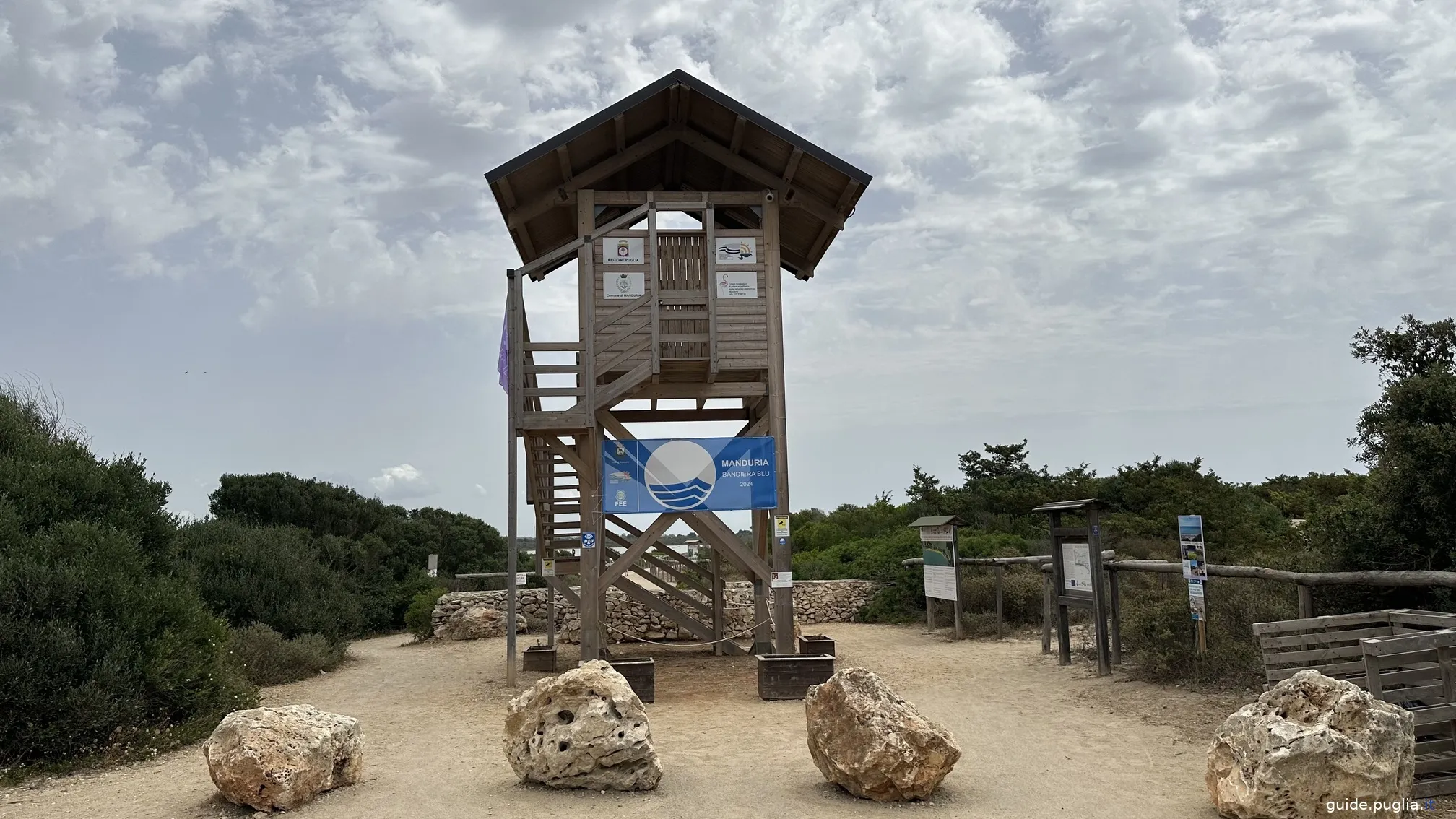
The History of the Salina
The Benedictine Monks
The history of Salina dei Monaci is closely linked to the presence of Benedictine Monks who settled in the area during the Middle Ages. For centuries, the monks were involved in the extraction, processing, and commercialization of salt, a mineral that was as valuable as gold at the time, as it was essential for preserving food. Their activities left an indelible mark on the territory, a testament to a responsible and sustainable interaction between man and the environment.
The Importance of Salt
The salt extracted from the salt pans was of fundamental importance in the medieval economy. Used to preserve food, salt allowed foods to be kept for long periods, ensuring survival during the winter months. Salina dei Monaci thus became a vital production and trade center for the region.
The Conservation of the Salina
A Heritage to Preserve
Since 2002, Salina dei Monaci has been part of the R.O. Natural Reserves of the Eastern Tarantino Coastline, a recognition that underscores the importance of this area. Conservation efforts are crucial to maintaining the ecological balance of the site and ensuring that future generations can continue to enjoy this natural wonder.
Natural Regeneration
Salina dei Monaci is a prime example of how nature, if preserved and respected, demonstrates an extraordinary capacity for regeneration. The sustainable management practices adopted over the centuries have allowed this ecosystem to maintain its integrity and biodiversity.
Visiting Salina dei Monaci
An Unforgettable Experience
Visiting Salina dei Monaci is an experience that stays with you. Whether you are a nature lover, a history enthusiast, or simply looking for a place of peace and beauty, this reserve has something to offer everyone. Before you set off to explore the reserve, it is important to remember that we are only guests in this wonderful ecosystem.
Tips for Visitors
When visiting Salina dei Monaci, respect nature and follow the reserve's rules. Do not disturb the animals, do not pick plants, and do not leave trash behind. Always remember that nature does not belong to us; we are just a part of it. Respecting it is the least we can do to ensure its survival and beauty.
How to Get There
Salina dei Monaci is located near Torre Colimena, in the province of Taranto. It is easily accessible by car and has parking nearby. Once you arrive, you can follow the marked trails that will take you through the most fascinating points of the reserve.
The Beaches of Salina dei Monaci
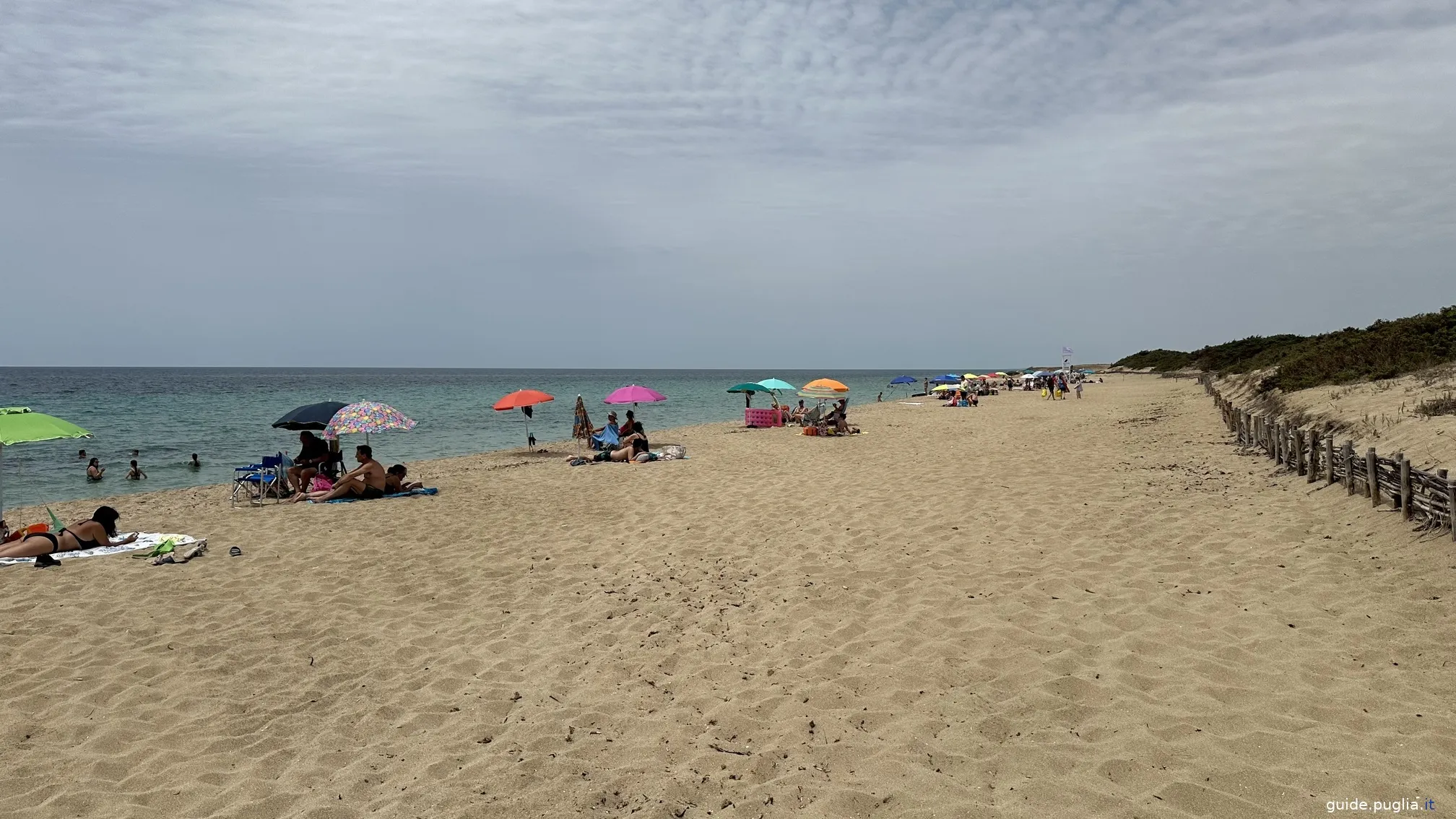
A Paradise of Sand and Sea
The beaches surrounding Salina dei Monaci are among the most beautiful in Puglia. These stretches of coast, characterized by fine sand and crystal-clear waters, offer a perfect combination of relaxation and nature. The beach at Salina dei Monaci is particularly appreciated for its unspoiled beauty and the tranquil atmosphere that prevails.
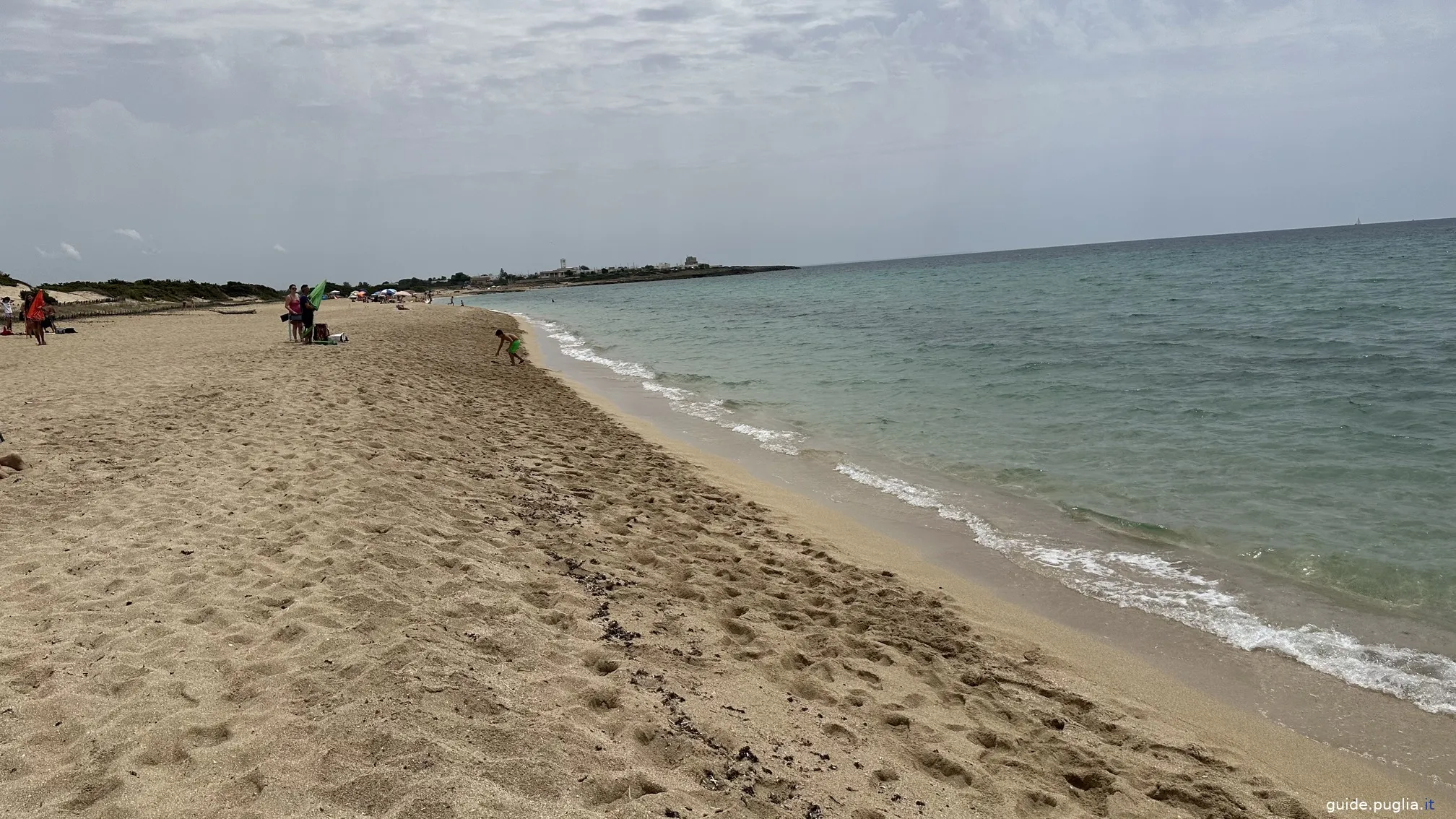
Beach Activities
The beaches of Salina dei Monaci are ideal for outdoor activities. In addition to swimming in the clear waters, you can snorkel to admire the rich marine life. Watersport enthusiasts can enjoy windsurfing and kitesurfing, thanks to the favorable wind and sea conditions.
Relaxation and Wellness
If you are looking for a place to relax and enjoy the sun, the beaches of Salina dei Monaci offer ample sandy spaces where you can lay down your towel and sunbathe in peace. Away from the hustle and bustle of more crowded beaches, here you can rejuvenate and immerse yourself in nature.
The Flora and Fauna of the Salina
The Salina dei Monaci, thanks to the particular environmental gradient of beach-dune-backdune wetland, offers a varied zonation of phytocenosis in a narrow strip of territory, which includes numerous plant species.
From the shoreline to the more consolidated areas, the flora of sandy coasts forms a catenary sequence of highly specialized plants capable of adapting to extreme and prohibitive conditions.
In the backdune area, evergreen shrubs like juniper thrive vigorously, creating densely populated communities.
Further inland, also lentisk, myrtle, phillyrea, and holm oak can be found.
This low pioneer scrub acts as a barrier that softens the effects of the sea, making its presence indispensable not only for the stabilization of the dunes by the root systems but also for the protection of the hinterland habitats.
The Prickly Juniper
(Juniperus oxycedrus subsp. macrocarpa) generally forms shrub communities on consolidated dunes and the first part of the backdune area, constituting the first woody stage in the terrestrial phytocenosis of sandy areas.
It is a pioneer species, capable of adapting to nutrient-poor soils, thermophilic, resistant to high temperatures due to direct sunlight, and dioecious, meaning it has separate male and female plants.
The fruits, which are an excellent food source for foxes, mustelids, and birds and take two years to mature, are much larger than those of other juniper species (10-15 mm) and take on the characteristic brown-purple color.
Their chromatic appearance is slightly softened by a layer of whitish pruina, a natural wax that protects the berries from the sun's rays, preventing dehydration.
The Phoenician Juniper
(Juniperus phoenicea), another subspecies of Juniperus, like the Prickly Juniper, is a strongly thermophilic and xerophilic plant, indifferent to the substrate, not fearing high temperatures and drought periods.
Its name derives from the Greek phoinikes and refers to the particular reddish-brown color of the berries, which in this plant are not covered by the pruina layer.
A characteristic that distinguishes it from other juniper species is the shape of its leaves, which are scaly, cylindrical, and not pointed.
Its root system can penetrate rocky areas, a trait that allows the plant, also resistant to a harsher climate, to take root on predominantly rocky elevations that reach considerable heights.
It grows slowly but is very long-lived and can reach several centuries of life, a characteristic that gives this plant and its fruits a strong symbolic charge.
A Refuge for Fauna
Salina dei Monaci is a crucial habitat for many animal species. In addition to migratory birds, the reserve also hosts various mammals, reptiles, and insects. The presence of rich fauna makes this place ideal for nature lovers and wildlife photographers.
Rare and Protected Plants
The flora of Salina dei Monaci is equally varied. In addition to the Mediterranean scrub plants, you can find rare and protected species that contribute to the biodiversity of the area. Among these is Limonium japigicum, an endemic plant that grows on sandy dunes and is particularly sensitive to environmental changes.
The Lagoon Ecosystem
The Lagoon: A Unique Habitat
The lagoon of Salina dei Monaci is a unique ecosystem characterized by brackish waters and a delicate ecological balance. This environment is particularly favorable for the growth of algae and aquatic plants, which in turn provide food and shelter for many species of fish and invertebrates.
The Importance of Wetlands
Wetlands like the lagoon of Salina dei Monaci play a crucial role in the global ecosystem. These areas filter water, reduce pollution, and provide habitats for a wide range of species. Conserving these environments is essential for maintaining the ecological health of the planet.
Local Culture and Traditions
The History of Torre Colimena
Torre Colimena, located near Salina dei Monaci, is a coastal tower built in the 16th century to defend the territory from pirate attacks. Today, this tower is a symbol of local history and culture and offers a spectacular panoramic view of the reserve and the sea.
Fishing Traditions
Fishing has always been an important part of local life around Salina dei Monaci. Traditional fishing techniques are still practiced today, and visitors can witness the tuna fishing and other marine species. These traditions are a living link to the past and a fundamental element of the region's cultural identity.
Sustainable Tourism
Promoting Sustainability
Sustainable tourism is a priority for Salina dei Monaci. Local authorities and conservation organizations work together to ensure that tourist activities do not harm the fragile ecosystem of the reserve. Visitors are encouraged to follow sustainability guidelines and respect the environment.
Environmental Education
Environmental education is a key element for the conservation of Salina dei Monaci. Guided tours, workshops, and educational activities are organized to raise awareness among visitors about the importance of nature conservation. These initiatives help create greater awareness and appreciation for the natural environment.
Salina dei Monaci and Climate
The Impact of Climate Change
Climate change poses a significant threat to Salina dei Monaci. Rising temperatures and changing precipitation patterns can have devastating effects on the reserve's ecosystem. It is essential to monitor these changes and adopt measures to mitigate negative impacts.
Adaptation Strategies
Adaptation strategies are crucial to protecting Salina dei Monaci from the effects of climate change. These include water resource management, conservation of vulnerable species, and coastal protection. Implementing these strategies requires collaboration between scientists, local authorities, and communities.
Conclusion
Salina dei Monaci is an extraordinary example of how nature, history, and culture can coexist harmoniously.
This nature reserve offers a refuge for a wide range of species, a place of peace for visitors, and a living testament to local history. Visiting Salina dei Monaci is an unforgettable experience that invites reflection on the importance of conservation and respect for the environment. By respecting and protecting this precious natural heritage, we can ensure that it continues to enchant and inspire future generations.
